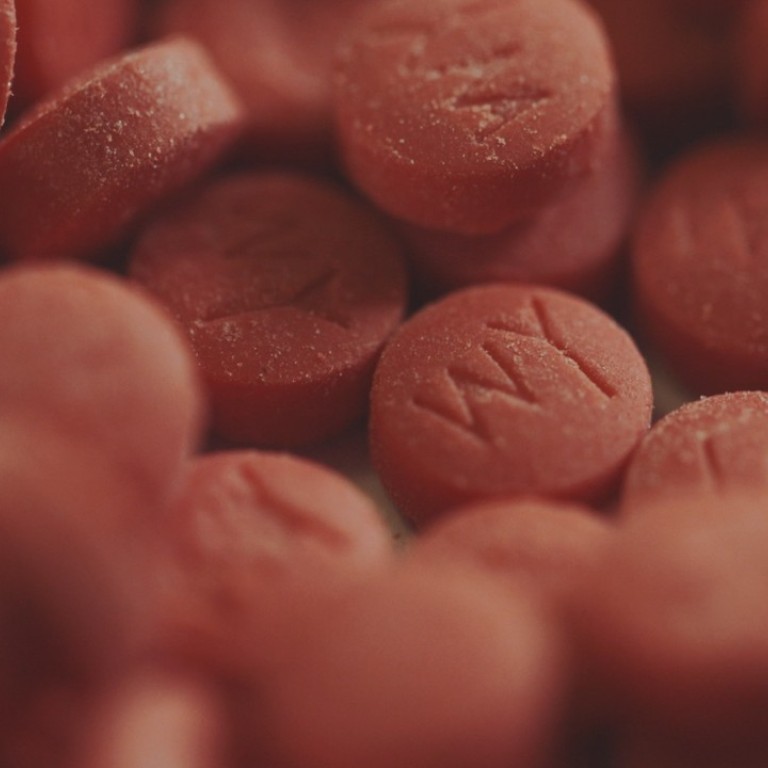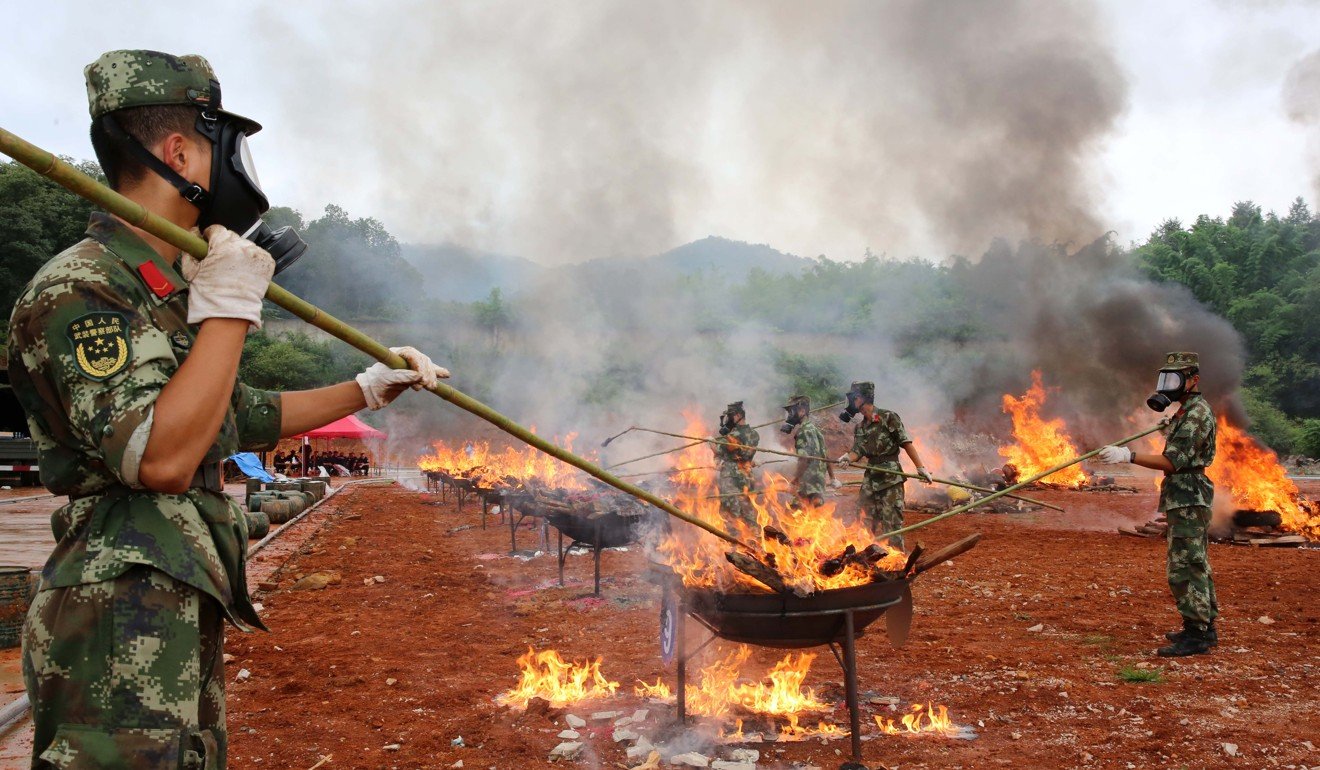
Can Myanmar meeting stop the tide of meth ‘flooding’ the Asia-Pacific?
- Record seizures have been reported in 2018, already surpassing the 70,000kg of methamphetamine intercepted last year
- This oversupply is making the drug accessible to more people – mainly youngsters – who could not previously afford it
Methamphetamine production and trafficking in Asia has reached “alarming levels”, according to experts, as seizures this year have already surpassed records set in 2017.
Top officials from 17 countries in the Asia-Pacific are meeting in Myanmar’s capital, Naypyidaw, from Wednesday to Friday to discuss the deteriorating situation and negotiate new strategies to tackle the problem of synthetic drugs.
“We are seeing an oversupply of meth as organised crime is flooding the region with it, pumping out excess supply with the purpose of building the market [and] the demand,” said Jeremy Douglas, a Bangkok-based regional representative for the United Nations Office on Drugs and Crime, who is joining the meeting.
Philippines’ corrupt customs bureau makes mockery of Duterte’s war on drugs
This oversupply is making the drug accessible to more people – mainly youngsters – who could not previously afford it, the expert told the South China Morning Post.
“Several governments are telling us that it is now available in places that it was never found before and at prices never seen before. It’s literally in front of people and at prices they can afford. That’s a very dangerous combination,” he said.

Consumers can now find yaba – pills made from methamphetamine and a combination of other stimulants – for as little as US$1 to US$5, down from US$5 to US$15 in 2014. A similar decline in the price of crystal meth has also taken place across region.
According to Douglas, all countries in the region have reported record levels of drug seizures in 2018, significantly exceeding last year’s numbers by the end of September. Data collected by the UN shows that nearly 70,000kg of methamphetamine were seized last year.
In 2015, methamphetamine seizures in the region around Myanmar surpassed Central and North America for the first time.
The boom in synthetic drugs in Asia [is] a regional phenomenon with global implications
While methamphetamine is by far the biggest concern when it comes to synthetic drugs in Asia, narcotics such as fentanyl, a painkiller that has made its way into the heroin supply, represent other emerging threats.
The synthetic opioid has caused thousands of deaths in the US, Canada and Australia.
“Some countries [in Asia] are sources and some transit. Fentanyl is a legitimate pharmaceutical product finding its way into the heroin and opiate market in different parts of the world. But while it’s a pharmaceutical product, it can also be made illicitly in drug labs,” Douglas said.
Other than China – which has been singled out as the drug’s main producer – evidence of fentanyl production and transit has also been found in Pakistan, India and Thailand, according to the UN.
“What it tells us is that industries in the region have a problem with leakage and diversion, but again it can be synthesised. Also, if it is not yet in the regional opiate market, it likely will be soon,” Douglas said, adding that he hopes governments in the region will agree on a strategy and series of actions to address the issue.
“The chemicals and pharmaceuticals used to make synthetic drugs have legitimate uses, but they are leaking from the industry and ending up in the hands of organised crime and traffickers, and the region needs to address the gaps that are allowing leakage, and improve law enforcement understanding, capacity and cooperation,” he said.
Myanmar’s Vice-Minister of Home Affairs Major-General Aung Thu said he welcomed the upcoming discussion between countries.
Thai police seize US$45 million worth of meth from ‘narcotics corridor’ convoy
“Precursors are required for synthetic drug production to continue to go up. While we are a significant source of illicit drugs, we are not a source of the chemicals,” he said.
For UN representative Douglas, Myanmar is in a difficult position – sandwiched between China and India, the two main sources of precursor chemicals.
“We have seen evidence [the precursors] are also coming from Vietnam, Thailand and other jurisdictions – but they can come from any country with a large industry,” he said.
“The fact that Myanmar shares the border with large chemical and pharmaceutical producers puts them in a difficult position geographically. We need to get the countries cooperating together to slow the flows across borders.”
Other than Myanmar, the countries most affected by this supply surge have been Thailand, Malaysia, Indonesia and Australia.

Min Tianshi, deputy secretary general of the National Narcotics Control Commission of China, agrees that there is a need to collaborate.
“We’ve been building towards this for nearly two years now, and the need to coordinate on a strategy and programme with the United Nations Office on Drugs and Crime has become obvious,” he said. “There is growing momentum to address cross-border precursor diversion and trafficking, and we see the talks here this week as a step forward.”
[Asia’s synthetic drugs boom is] a regional phenomenon with global implications
Inshik Sim, a synthetic drug analyst for the UN, said sharing information was crucial to combat the problem. “Governments should be able to look for and identify new substances and chemicals and share this information with each other,” he said. “Data can come from law enforcement operations and seizures, but it often comes from regulatory and health authorities who see things before the police. After what we have seen in North America with fentanyl and related powerful opioids, we hope everyone appreciates [that] rapid sharing of information can save lives.”
Douglas further cautioned that the growing problem was not limited to Asia.
“The boom in synthetic drugs in Asia has repercussions beyond the region itself, as the supply is being moved to more and more distant markets,” he said. “It’s a regional phenomenon with global implications.”

